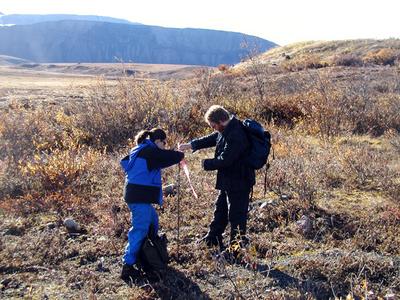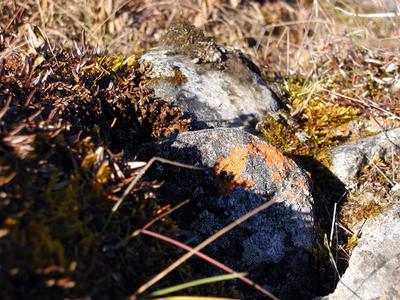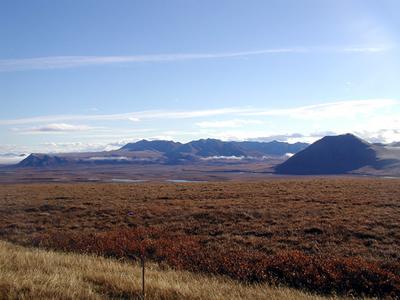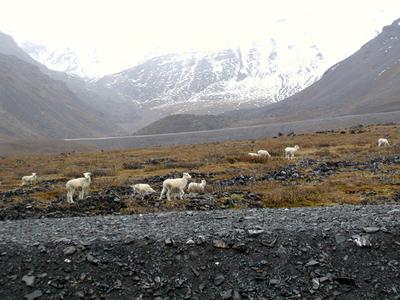9 September, 2002
9/9/02
Hello form Toolik Lake.
We woke up for our first day at Toolik Lake this morning, to find that it had
not snowed here last night. There was some new snow in the mountains and we
had a fairly heavy frost, but the expected snow for last night was a false
alarm. I must say that I am grateful for the lack of snow. I wanted very much
to explore the tundra without a snow cover. I also was not looking forward to
the snow melting and making everything wet and muddy. The only part of the
tundra soil that thaws for the summer is the top few feet. Below the top few
feet, the ground is solid permafrost. Consequently, the surface water is
unable to drain through the soil and remains on the surface to make the
tundra very wet at this time of year.
With no snow and mostly clear skies, it turned out to be a beautiful day. We
began our day with a teleconference between the team here at Toolik and the
Assumption School in Cincinnati. Mr. Mike Quinones' 7th grade students had
plenty of questions for us and hopefully learned a little about arctic
insects. Once we ended our conference, Dr. Valerie Bennett, graduate student
Todd Sformo and I headed out to the edges of the Sag River to look for
beetles. The sight is one that we visited in the spring and has been a good
source of Click Beetles for the study. Today was no exception. We were able
to collect more than two hundred Click Beetles as well as about three dozen
Carabid beetles. Carabids are interesting because they are actually
freeze-tolerant. This means that they have the ability to actually freeze and
then revive themselves once thawed out. Most of the beetles we see here are
freeze-avoiding which means that they have proteins in their bodies that act
like an antifreeze and allows them to survive very cold temperatures without
freezing. We now have excellent examples of both survival strategies with the
Carbids and the Click Beetles. As an additional bonus for our efforts today,
we found a small brown beetle that we have not seen before. Our first task
will be to identify this new beetle and then determine whether or not it is a
candidate for study.
With plenty of Click Beetles secured, we headed back to the Toolik camp and
to our lab. Because we were so successful in our morning collection efforts,
we were able to spend the afternoon getting a head start on the lab work. We
were able to measure the freezing points of to groups of Click Beetles and we
were able to collect some hemolymph (insect blood) that we can check for
protein activity. We were able to spend a beautiful day out working on the
tundra, successfully collect a large number of beetles and get our lab work
started. All in all, this was a very good first day.

Valerie and Todd use metal posts and GPS coordinates to mark collection sites.

Even the smallest clumps of tundra grasses show the colors of the fall at this time of year.

We look for beetles by turning over partially buried rocks similar to this one.

The Brooks Range Mountains (in the background) and the openness of the Tundra are the dominant landscape features here.

The Tundra seems to go on forever.

While we've only seen a few Caribou so far, we did see this heard of Dall Sheep at the base of the mountains.
Contact the TEA in the field at
.
If you cannot connect through your browser, copy the
TEA's e-mail address in the "To:" line of
your favorite e-mail package.
|
